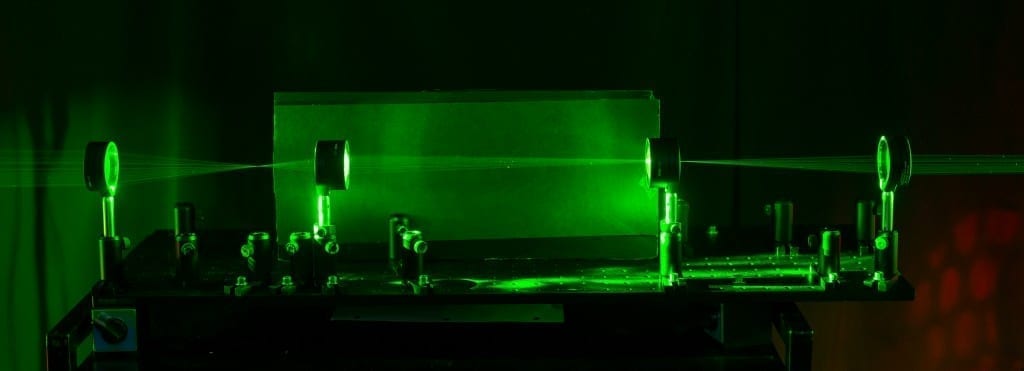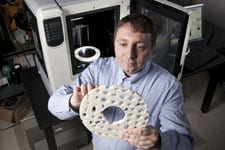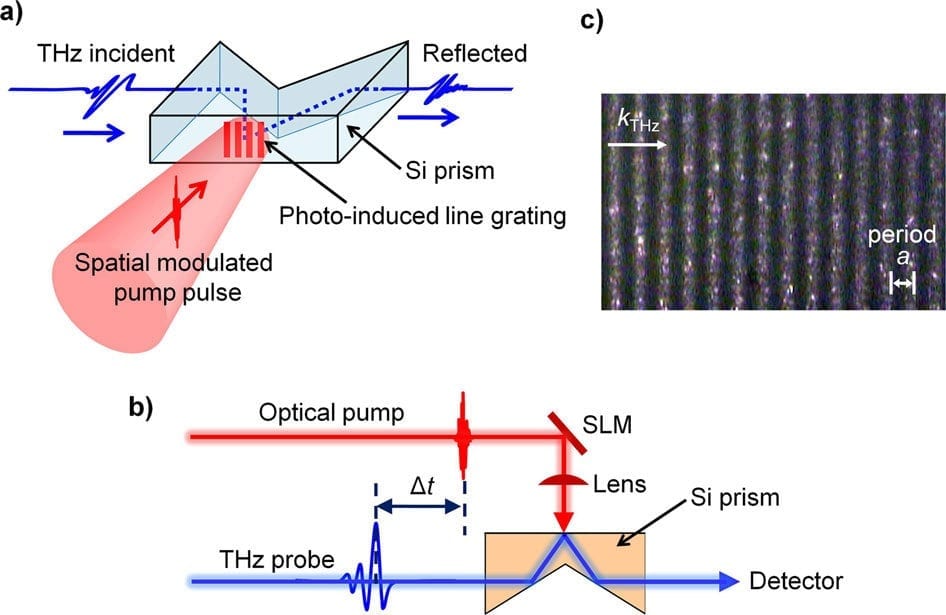
Inspired perhaps by Harry Potter’s invisibility cloak, scientists have recently developed several ways—some simple and some involving new technologies—to hide objects from view. The latest effort, developed at the University of Rochester, not only overcomes some of the limitations of previous devices, but it uses inexpensive, readily available materials in a novel configuration.
“There’ve been many high tech approaches to cloaking and the basic idea behind these is to take light and have it pass around something as if it isn’t there, often using high-tech or exotic materials,” said John Howell, a professor of physics at the University of Rochester. Forgoing the specialized components, Howell and graduate student Joseph Choi developed a combination of four standard lenses that keeps the object hidden as the viewer moves up to several degrees away from the optimal viewing position.
“This is the first device that we know of that can do three-dimensional, continuously multidirectional cloaking, which works for transmitting rays in the visible spectrum,” said Choi, a Ph.D. student at Rochester’s Institute of Optics.
The details of the device are now published in the journalOptics Express.
Many cloaking designs work fine when you look at an object straight on, but if you move your viewpoint even a little, the object becomes visible, explains Howell. Choi added that previous cloaking devices can also cause the background to shift drastically, making it obvious that the cloaking device is present.
In order to both cloak an object and leave the background undisturbed, the researchers determined the lens type and power needed, as well as the precise distance to separate the four lenses. To test their device, they placed the cloaked object in front of a grid background. As they looked through the lenses and changed their viewing angle by moving from side to side, the grid shifted accordingly as if the cloaking device was not there. There was no discontinuity in the grid lines behind the cloaked object, compared to the background, and the grid sizes (magnification) matched.
The Rochester Cloak can be scaled up as large as the size of the lenses, allowing fairly large objects to be cloaked. And, unlike some other devices, it’s broadband so it works for the whole visible spectrum of light, rather than only for specific frequencies.
The Latest on: Cloaking device
[google_news title=”” keyword=”Cloaking device” num_posts=”10″ blurb_length=”0″ show_thumb=”left”]
via Google News
The Latest on: Cloaking device
- The Finals hyped ‘very cool’ update could be this teased new modeon April 25, 2024 at 5:29 am
The Finals developer has said that the next update will add 'something very cool' and it could be a previously teased new game mode.
- The Finals’ new update stuns Light class players the wrong wayon April 17, 2024 at 4:14 am
Start switching up your tactics in The Finals, as the latest The Finals update on PS5 and Xbox tackles Light players with these nerfs.
- The Finals Update 2.5.0 for Version 1.000.026 Brings Balance Changes This April 17on April 17, 2024 at 2:38 am
Embark Studios has released The Finals update 2.5.0 (PS5 update version 1.000.026) for several balance changes. Here is more info.
- Scientists solved the 70-year-old mystery of an insect's invisibility coat that can manipulate lighton April 15, 2024 at 10:13 am
A team of researchers created the world's first synthetic brochosomes in a huge step towards invisibility cloaking technology.
- Scientists solved the 70-year-old mystery of an insect's invisibility coat that can manipulate lighton April 14, 2024 at 5:00 pm
They hope their brochosomes will one day be used for invisible cloaking devices and other technologies. We tend to think of invisibility cloaks as science fiction. But one group of scientists has ...
- Cloaking Device: Liu, Joung Launch $100M Nvelop Therapeutics to Advance Delivery of Genetic Cargoon April 9, 2024 at 8:00 am
A $100-million startup is developing not one but two answers to the challenge that has long dogged the gene therapy field: How can genetic medicines best be delivered to patients safely and ...
- ‘Star Trek 4’ Beams Up New Screenwriter: ‘The Flight Attendant’ Creator Steve Yockey (EXCLUSIVE)on March 27, 2024 at 9:15 am
Story details remain under a powerful cloaking device, but Paramount Pictures and Bad Robot still intend the project to be the final chapter for the cast that rebooted the franchise in movie ...
- Backyard insect inspires invisibility devices, next gen techon March 18, 2024 at 6:24 am
This could allow the development of bioinspired optical materials with possible applications ranging from invisible cloaking devices to coatings to more efficiently harvest solar energy ...
- How To Use The Cloaking Device In The Finalson February 20, 2024 at 1:02 am
The Finals features three classes that can be devastating or almost useless on the battlefield, depending on your gadgets and skill level. By watching the top 500 players do their thing, you can ...
- The Cloaking Devices Of Star Trek Explainedon July 12, 2023 at 2:12 pm
Starting from a real-world perspective, Star Trek’s cloaking devices were first developed (though not yet named as such) by screenwriter Paul Schneider for the Original Series “Balance of ...
via Bing News











